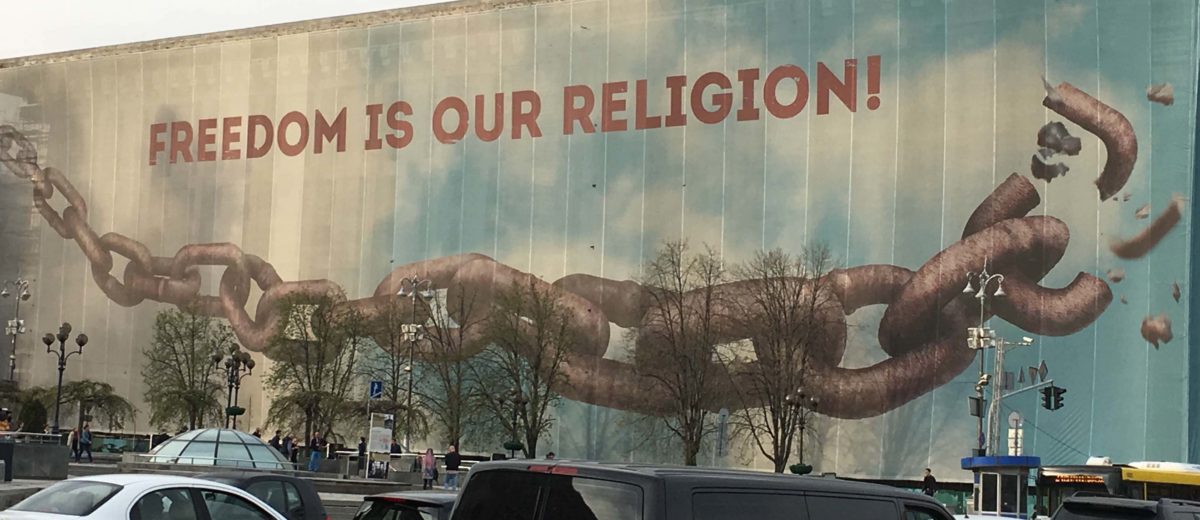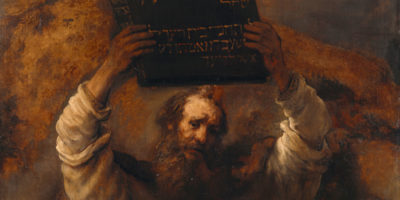My visit last week to Kyiv in Ukraine was the first since the Maidan Revolution four years ago.
Walking around Maidan (Independence) Square in the centre of Kyiv, I felt I was witnessing an unfinished drama still being played out on the historic border between east and west. Information boards and sculptures filled the square, commemorating the momentous and bloody events of those winter weeks in 2013-14 which overthrew the Kremlin’s puppet president, Victor Yanukovych.
Today Ukraine is tottering between two destinies. Maidan represents a hopeful future, in which an engaged church and an informed and sympathetic Europe can play decisive roles. But a dark alternative lurks in the background, of a vassal Ukraine with a church paying homage to a Putin preening himself as the ‘champion of the faith’.
Surveying the oblong ‘square’ built over an underground shopping mall, I recalled the Orange Revolution erupting there in late 2004 after presidential elections had been revealed to be rigged.
A decade later, the Maidan Revolution was triggered after Yanukovych blocked the association agreement with the European Union. Students and journalists led protests which swelled to 20,000. Government forces and their Kremlin advisors tried to quell the protests using rubber bullets and tear gas, before escalating to live ammunition. Snipers from a nearby hotel randomly killed members of the crowd which scattered for shelter in nearby buildings. The trade union building fronting onto the square was set on fire by special forces explosives, trapping many inside. Today a giant banner declaring, ‘Freedom is our religion!’ hangs on this building, still under reconstruction.
St Michaels’ Monastery offered refuge to protestors and refused entry to special forces. The protestors held out, but not before over one thousand were injured and a hundred killed. I walked past the monastery wall covered with photos immortalising these ‘Heavenly Hundred’.
After protestors gained control of key facilities in Kyiv on February 22, the parliament voted 328–0 in favour of impeaching Yanukovych. Calm finally prevailed.
After an interim presidency (of a Baptist pastor!), Petro Poroshenko was elected president in May. Meanwhile Putin had annexed Crimea and ordered a stealth invasion of the Donbass region bordering Russia, initiating an ongoing conflict that has so far claimed over 10,000 lives.
Symbol of liberty
Sorting through the facts and impressions, I slowly realised the significance of this struggle for Europe’s future. Something new has been emerging here. What some have called homo maidanus has begun to supplant homo sovieticus. For, over two decades since the collapse of communism, the Ukrainian mentality had remained unchanged, servile to abusive authority and unwilling to accept personal responsibility or to resist injustice and corruption.
The Maidan protests revealed a new mentality, no longer prepared to support the status quo. Homo maidanus insisted on civil and religious freedoms. Maidan had become a symbol of liberty.
Also new was the role of the churches in the success of the Maidan revolution. It had not gone unnoticed that Christians were at the forefront of the peaceful protests. Among the ‘Heavenly Hundred’ were dozens of believers standing up against oppression, injustice and criminality. One protestor’s testimony I read on a monument told of becoming a believer when he heard the bells of St Michael’s Monastery Church ringing at midnight to warn of an impending attack of security forces.
Harbinger of hope
Churches responded in three ways to the Maidan protests. Firstly, the Moscow Patriarch branch of the Orthodox Church remained loyal to the Kremlin’s tough stance throughout, and thus lost moral authority in the eyes of most Ukrainians. Secondly, many evangelical churches remained uninvolved, convinced that politics was a dirty business and had nothing to do with the church’s mission of saving souls. These churches also have lost the respect of most Ukrainians.
But thirdly, the Ukrainian Orthodox Church and those Protestant and evangelical churches who rolled up their sleeves and engaged in the thick of the struggle declared support for Maidan because it stood for morality. They continue to enjoy high respect in the land. These churches developed mutual respect, understanding that they were together engaged in the mission of God to see God’s Kingdom come in the Ukraine. They began to recognise that their commonalities outweighed their differences. They offered a glimpse of a future united body of believers open to learn from each other.
These churches saw their calling under God as serving the people, not the state; as promoting the Kingdom of God in all spheres of life. Here was a harbinger of hope for transformation, not only in Ukraine but across the former Soviet Union. The Church that was part of Maidan pointed to the future. The Church that opposed or ignored Maidan will be left behind with the past.
What happens in Ukraine from here onwards has huge ramifications for the whole of Eurasia.
Till next week,



